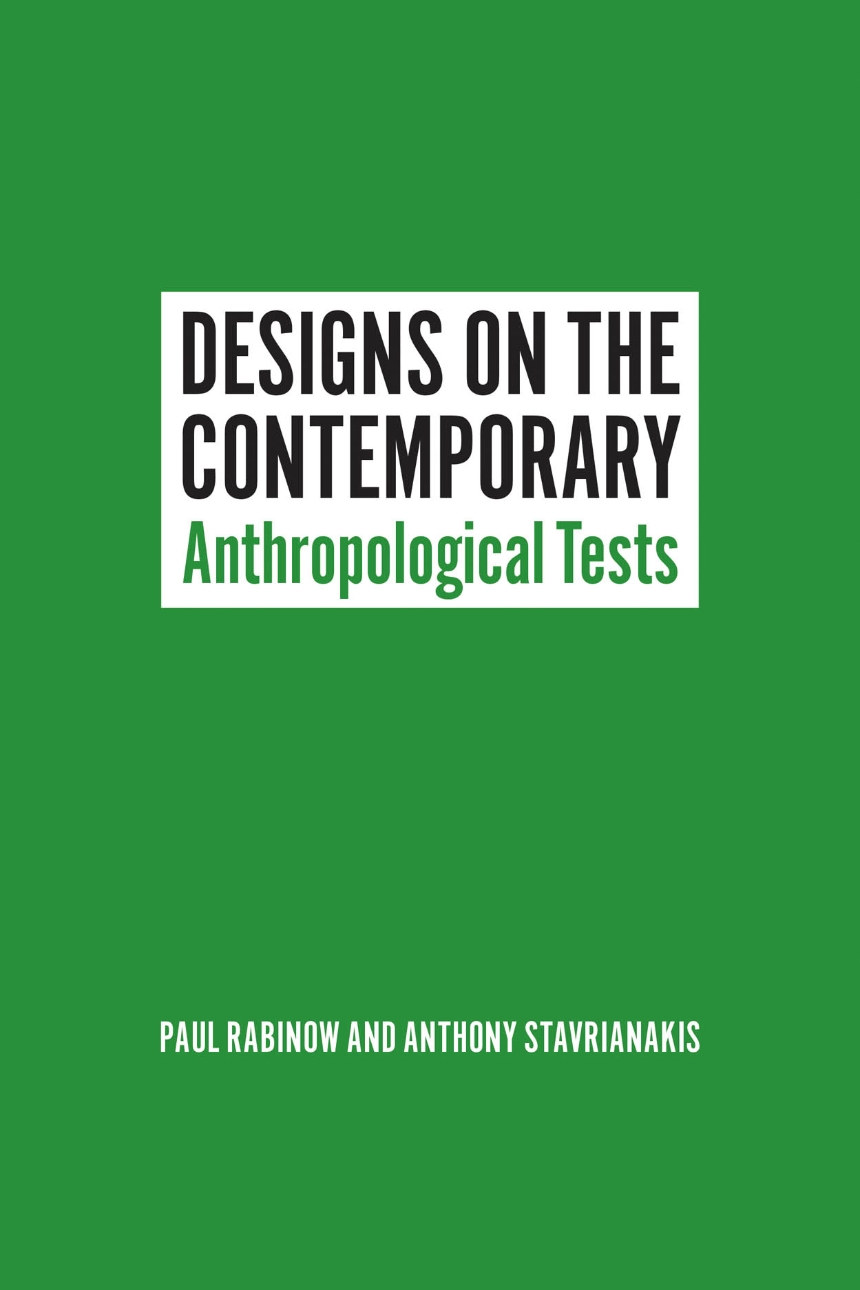Designs on the Contemporary
Anthropological Tests
Designs on the Contemporary pursues the challenge of how to design and put into practice strategies for inquiring into the intersections of philosophy and anthropology. Drawing on the conceptual repertoires of Max Weber, Michel Foucault, and John Dewey, among others, Paul Rabinow and Anthony Stavrianakis reflect on and experiment with how to give form to anthropological inquiry and its aftermath, with special attention to the ethical formation and ramifications of this mode of engagement.
The authors continue their prior explorations of the contemporary in past works: How to conceptualize, test, and give form to breakdowns of truth and conduct, as well as how to open up possibilities for the remediation of such breakdowns. They offer a surprising and contrasting pair of case studies of two figures who engaged with contemporary breakdowns: Salman Rushdie and Gerhard Richter. Approaching Richter’s artistic struggles with form and technique in the long wake of modernism and Rushdie’s struggles to find a narrative form—as well as a form for living—to respond to the Iranian fatwa issued against him, they show how both men formulated different new approaches to anthropology for the twenty-first century.
The authors continue their prior explorations of the contemporary in past works: How to conceptualize, test, and give form to breakdowns of truth and conduct, as well as how to open up possibilities for the remediation of such breakdowns. They offer a surprising and contrasting pair of case studies of two figures who engaged with contemporary breakdowns: Salman Rushdie and Gerhard Richter. Approaching Richter’s artistic struggles with form and technique in the long wake of modernism and Rushdie’s struggles to find a narrative form—as well as a form for living—to respond to the Iranian fatwa issued against him, they show how both men formulated different new approaches to anthropology for the twenty-first century.
180 pages | 2 tables | 6 x 9 | © 2014
Anthropology: Cultural and Social Anthropology
Philosophy: Ethics, General Philosophy
Reviews
Table of Contents
Preface
Part One: After the Actual
Introduction
One. Problematization of the Modern: Bios
Two. Logic
Three. Forms
Part Two: Toward the Contemporary
Introduction
Four. The Rushdie Affair: Truth and Conduct
Five. Gerhard Richter’s Pathos
Conclusion: Checking the Contemporary
Terms of Engagement
Notes
Bibliography
Index
Part One: After the Actual
Introduction
One. Problematization of the Modern: Bios
Two. Logic
Three. Forms
Part Two: Toward the Contemporary
Introduction
Four. The Rushdie Affair: Truth and Conduct
Five. Gerhard Richter’s Pathos
Conclusion: Checking the Contemporary
Terms of Engagement
Notes
Bibliography
Index
